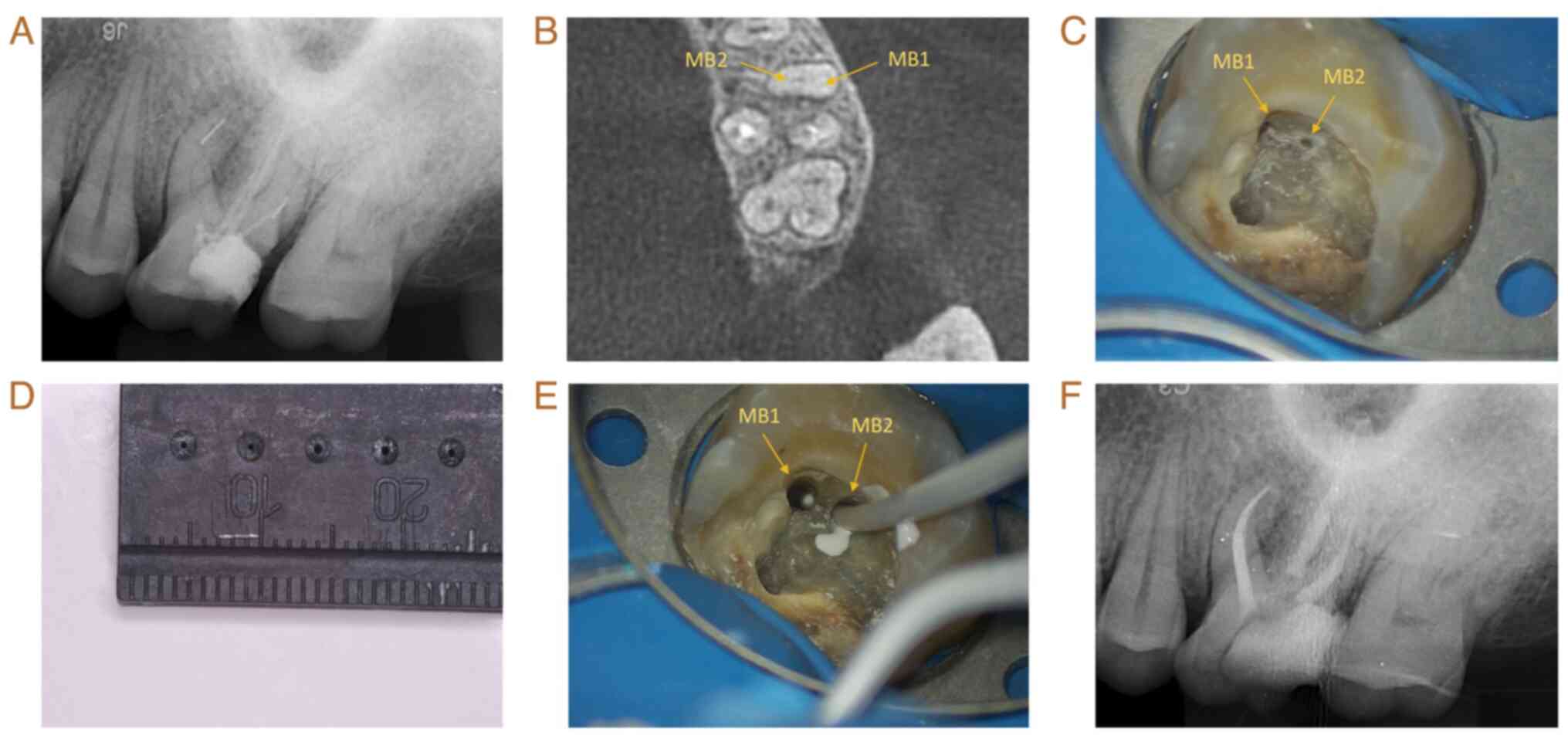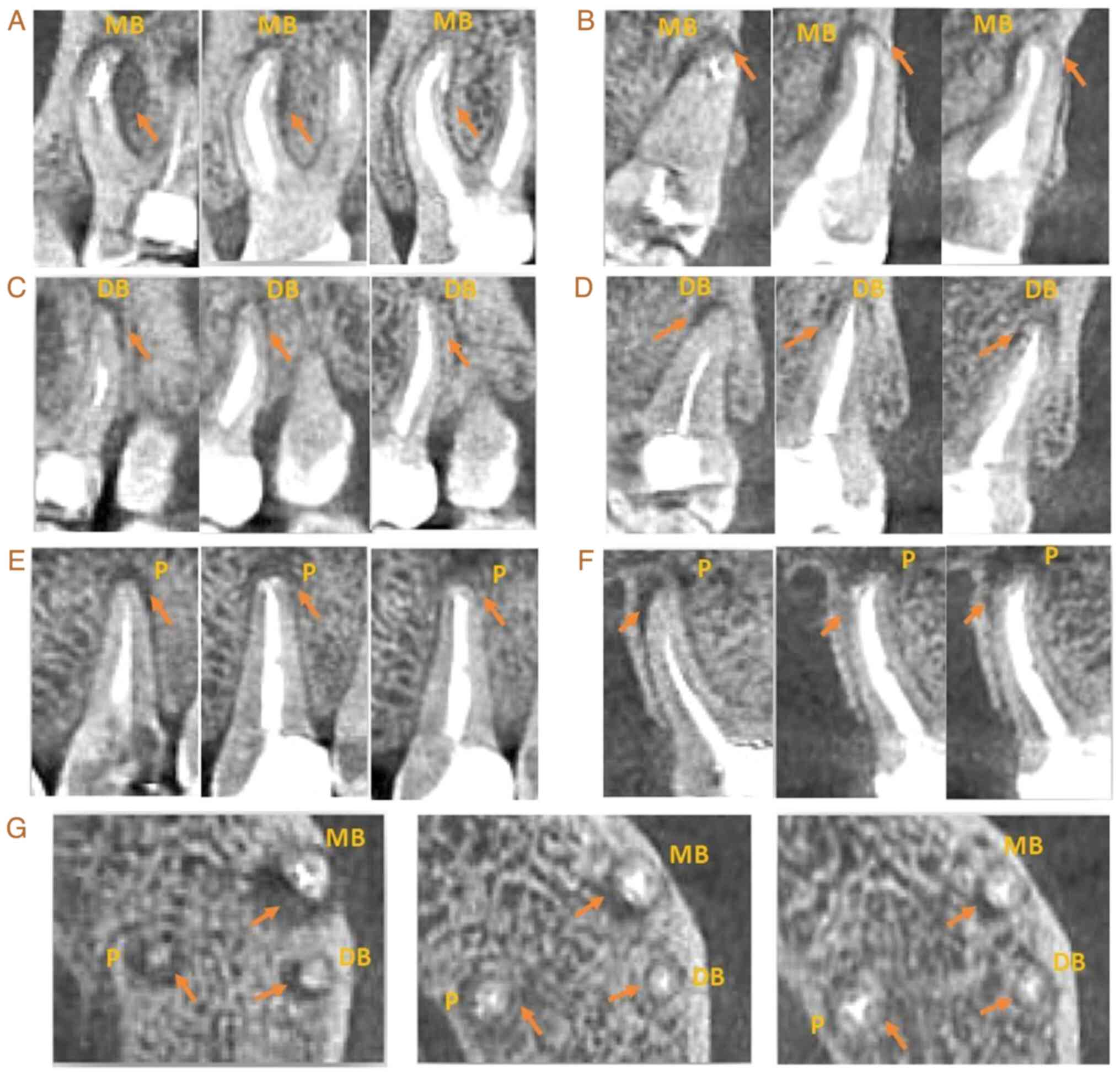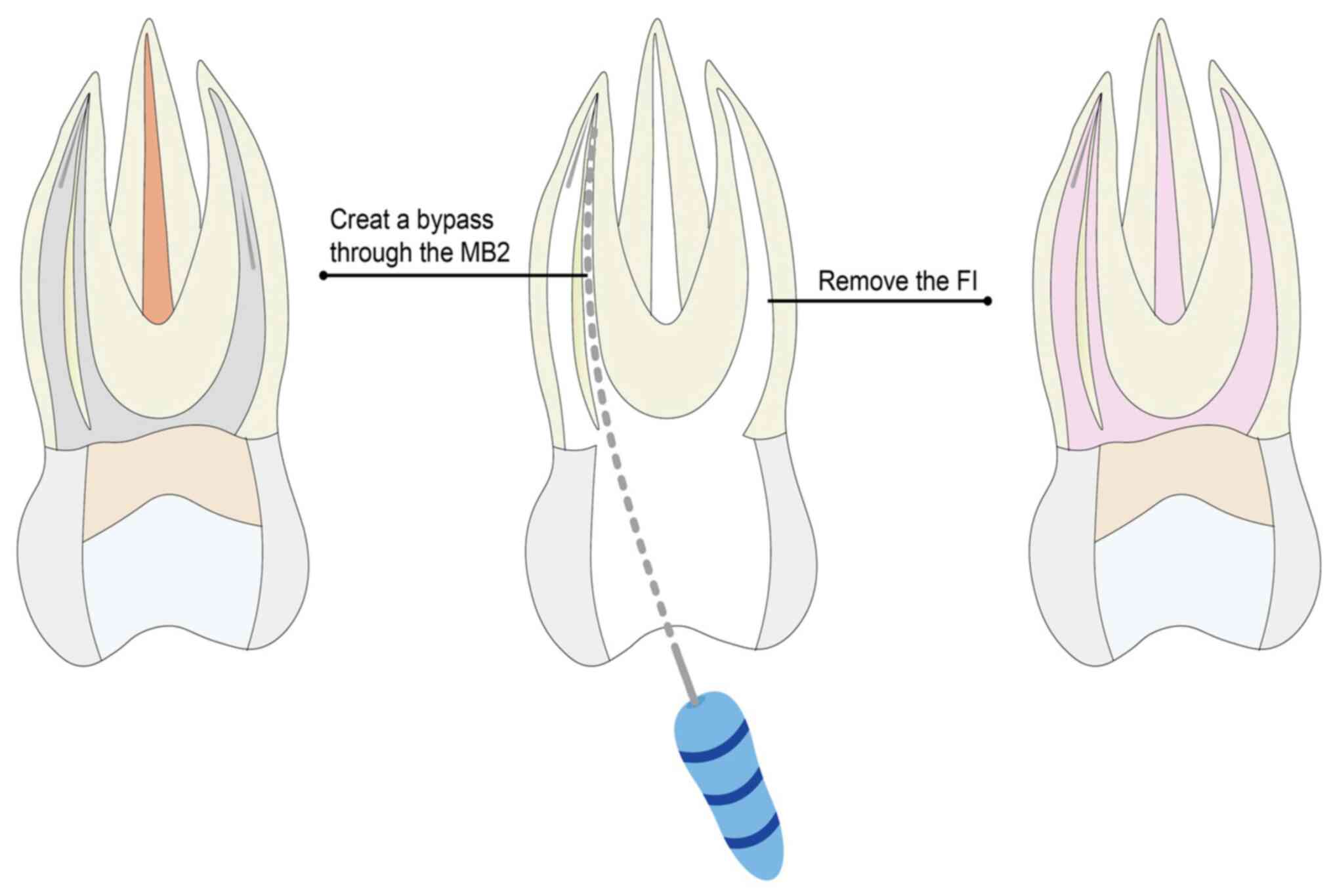|
1
|
Wycoff RC and Berzins DW: An in vitro
comparison of torsional stress properties of three different rotary
nickel-titanium files with a similar cross-sectional design. J
Endod. 38:1118–1120. 2012.PubMed/NCBI View Article : Google Scholar
|
|
2
|
Spili P, Parashos P and Messer HH: The
impact of instrument fracture on outcome of endodontic treatment. J
Endod. 31:845–850. 2005.PubMed/NCBI View Article : Google Scholar
|
|
3
|
Khasnis SA, Kar PP, Kamal A and Patil JD:
Rotary science and its impact on instrument separation: A focused
review. J Conserv Dent. 21:116–124. 2018.PubMed/NCBI View Article : Google Scholar
|
|
4
|
Parashos P and Messer HH: Rotary NiTi
instrument fracture and its consequences. J Endod. 32:1031–1043.
2006.PubMed/NCBI View Article : Google Scholar
|
|
5
|
Plotino G, Costanzo A, Grande NM, Petrovic
R, Testarelli L and Gambarini G: Experimental evaluation on the
influence of autoclave sterilization on the cyclic fatigue of new
nickel-titanium rotary instruments. J Endod. 38:222–225.
2012.PubMed/NCBI View Article : Google Scholar
|
|
6
|
McGuigan MB, Louca C and Duncan HF:
Clinical decision-making after endodontic instrument fracture. Br
Dent J. 214:395–400. 2013.PubMed/NCBI View Article : Google Scholar
|
|
7
|
Madarati AA, Hunter MJ and Dummer PM:
Management of intracanal separated instruments. J Endod.
39:569–581. 2013.PubMed/NCBI View Article : Google Scholar
|
|
8
|
Tikhonova S, Booij L, D'Souza V, Crosara
KTB, Siqueira WL and Emami E: Investigating the association between
stress, saliva and dental caries: A scoping review. BMC Oral
Health. 18(41)2018.PubMed/NCBI View Article : Google Scholar
|
|
9
|
Cleghorn BM, Christie WH and Dong CC: Root
and root canal morphology of the human permanent maxillary first
molar: A literature review. J Endod. 32:813–821. 2006.PubMed/NCBI View Article : Google Scholar
|
|
10
|
Chhina H, Hans MK and Chander S:
Ultrasonics: A novel approach for retrieval of separated
instruments. J Clin Diagn Res. 9:ZD18–ZD20. 2015.PubMed/NCBI View Article : Google Scholar
|
|
11
|
Bordone A, Ciaschetti M, Perez C and
Couvrechel C: Guided endodontics in the management of intracanal
separated instruments: A case report. J Contemp Dent Pract.
23:853–856. 2022.PubMed/NCBI View Article : Google Scholar
|
|
12
|
Pradhan B, Gao Y, Gao Y, Guo T, Cao Y and
He J: Broken instrument removal from mandibular first molar with
conebeam computed tomography based pre-operative computer-assisted
simulation: A case report. JNMA J Nepal Med Assoc. 59:795–798.
2021.PubMed/NCBI View Article : Google Scholar
|
|
13
|
AlRahabi MK and Ghabbani HM: Removal of a
separated endodontic instrument by using the modified hollow
tube-based extractor system: A case report. SAGE Open Med Case Rep.
8(2050313X20907822)2020.PubMed/NCBI View Article : Google Scholar
|
|
14
|
Monteiro JC, Kuga MC, Dantas AA,
Jordao-Basso KC, Keine KC, Ruchaya PJ, Faria G and Leonardo Rde T:
A method for retrieving endodontic or atypical nonendodontic
separated instruments from the root canal: A report of two cases. J
Contemp Dent Pract. 15:770–774. 2014.PubMed/NCBI View Article : Google Scholar
|
|
15
|
Nevares G, Cunha RS, Zuolo ML and Bueno
CE: Success rates for removing or bypassing fractured instruments:
A prospective clinical study. J Endod. 38:442–444. 2012.PubMed/NCBI View Article : Google Scholar
|
|
16
|
Fu M, Huang X, Zhang K and Hou B: Effects
of ultrasonic removal of fractured files from the middle third of
root canals on the resistance to vertical root fracture. J Endod.
45:1365–1370. 2019.PubMed/NCBI View Article : Google Scholar
|
|
17
|
Lea SC, Walmsley AD, Lumley PJ and Landini
G: A new insight into the oscillation characteristics of endosonic
files used in dentistry. Phys Med Biol. 49:2095–2102.
2004.PubMed/NCBI View Article : Google Scholar
|
|
18
|
Hindlekar A, Kaur G, Kashikar R and
Kotadia P: Retrieval of separated intracanal endodontic
instruments: A series of four case reports. Cureus.
15(e35694)2023.PubMed/NCBI View Article : Google Scholar
|
|
19
|
Cuje J, Bargholz C and Hulsmann M: The
outcome of retained instrument removal in a specialist practice.
Int Endod J. 43:545–554. 2010.PubMed/NCBI View Article : Google Scholar
|
|
20
|
Madarati AA, Qualtrough AJ and Watts DC:
Factors affecting temperature rise on the external root surface
during ultrasonic retrieval of intracanal separated files. J Endod.
34:1089–1092. 2008.PubMed/NCBI View Article : Google Scholar
|
|
21
|
Hashem AA: Ultrasonic vibration:
Temperature rise on external root surface during broken instrument
removal. J Endod. 33:1070–1073. 2007.PubMed/NCBI View Article : Google Scholar
|
|
22
|
Sjogren U, Figdor D, Persson S and
Sundqvist G: Influence of infection at the time of root filling on
the outcome of endodontic treatment of teeth with apical
periodontitis. Int Endod J. 30:297–306. 1997.PubMed/NCBI View Article : Google Scholar
|
|
23
|
Arshadifar E, Shahabinejad H, Fereidooni
R, Shahravan A and Kamyabi H: Possibility of bypassing three
fractured rotary NiTi files and its correlation with the degree of
root canal curvature and location of the fractured file: An in
vitro study. Iran Endod J. 17:62–66. 2022.PubMed/NCBI View Article : Google Scholar
|
|
24
|
Kalogeropoulos K, Xiropotamou A, Koletsi D
and Tzanetakis GN: The effect of cone-beam computed tomography
(CBCT) evaluation on treatment planning after endodontic instrument
fracture. Int J Environ Res Public Health. 19(4088)2022.PubMed/NCBI View Article : Google Scholar
|
|
25
|
Sinha S, Barua AND, Rana KS, Singh K,
Kumar S and Saini R: Comparison of efficacy of various intracanal
irrigants with ultrasonic bypass system. J Pharm Bioallied Sci. 13
(Suppl 2):S1390–S1393. 2021.PubMed/NCBI View Article : Google Scholar
|
|
26
|
Liu J, Watanabe S, Mochizuki S, Kouno A
and Okiji T: Comparison of vapor bubble kinetics and cleaning
efficacy of different root canal irrigation techniques in the
apical area beyond the fractured instrument. J Dent Sci.
18:1141–1147. 2023.PubMed/NCBI View Article : Google Scholar
|
|
27
|
Vadachkoria O, Mamaladze M, Jalabadze N,
Chumburidze T and Vadachkoria D: Evaluation of three obturation
techniques in the apical part of root canal. Georgian Med News.
17-21:2019.PubMed/NCBI
|
|
28
|
Ho ES, Chang JW and Cheung GS: Quality of
root canal fillings using three gutta-percha obturation techniques.
Restor Dent Endod. 41:22–28. 2016.PubMed/NCBI View Article : Google Scholar
|












